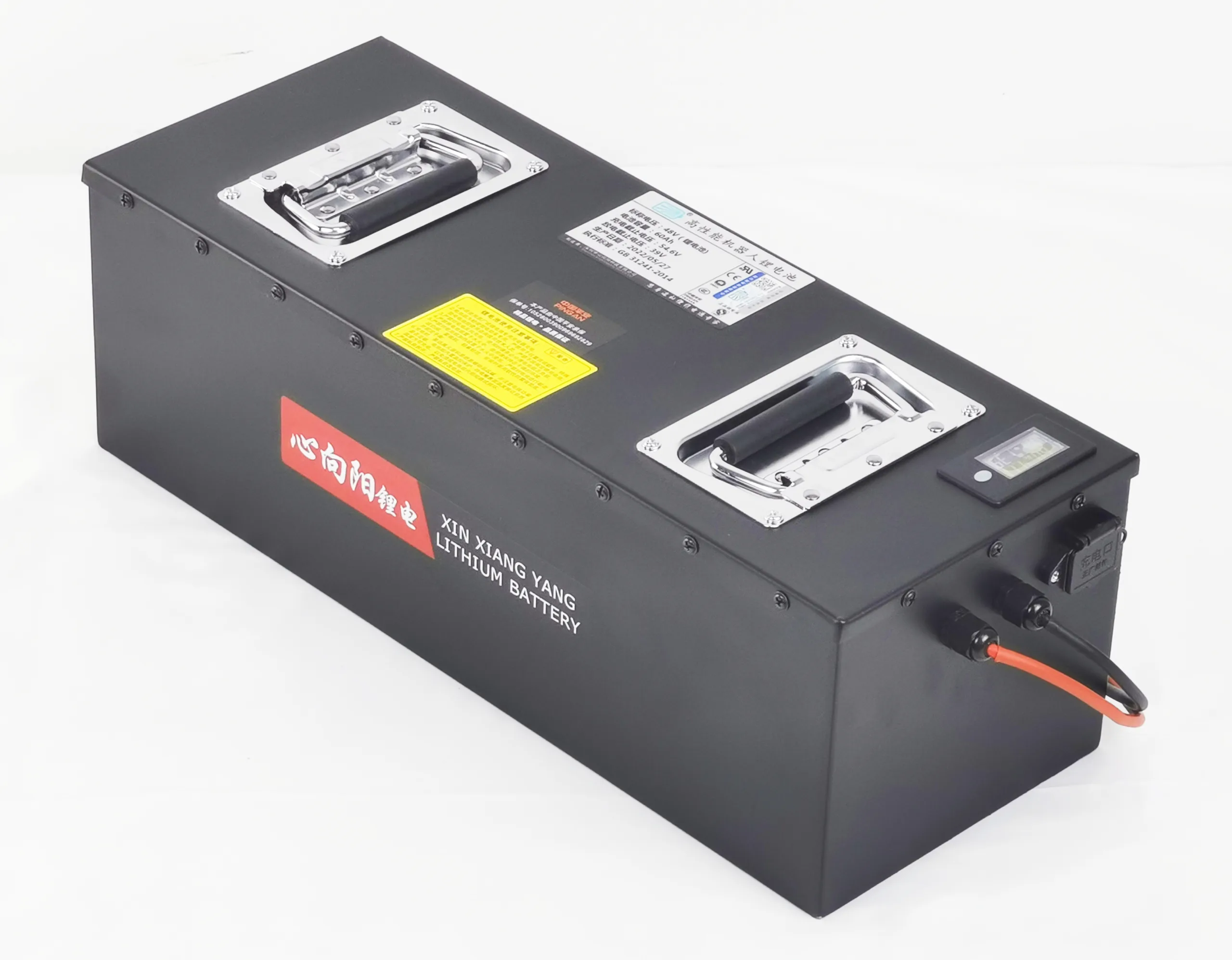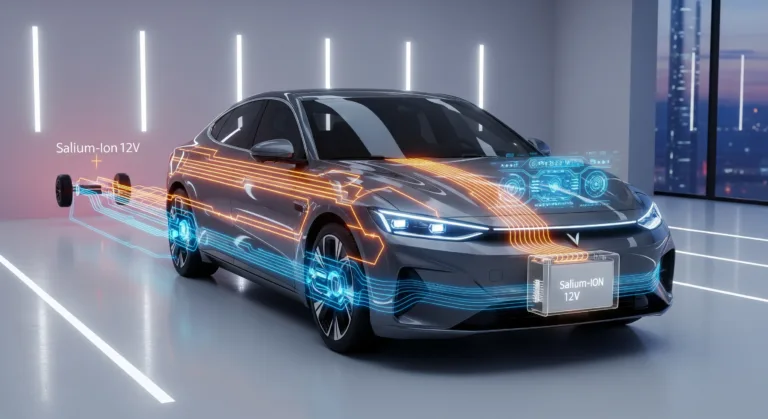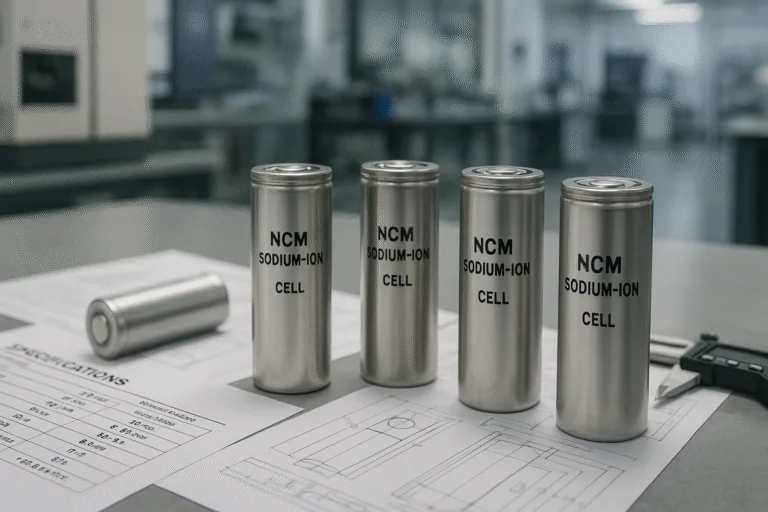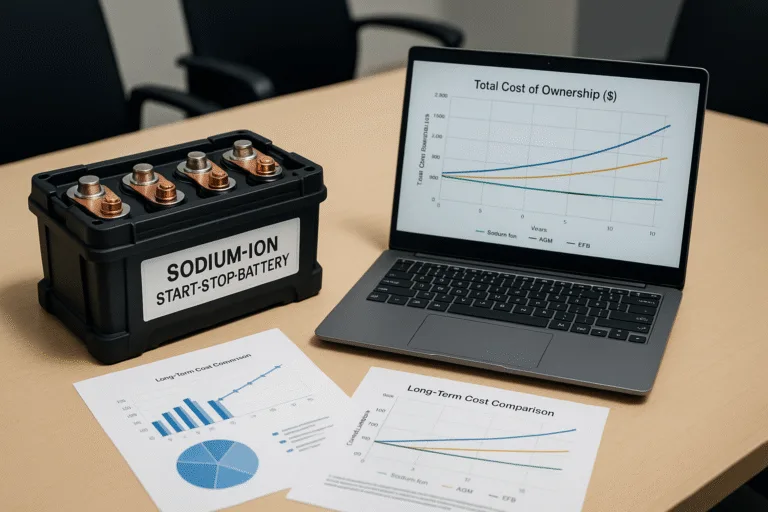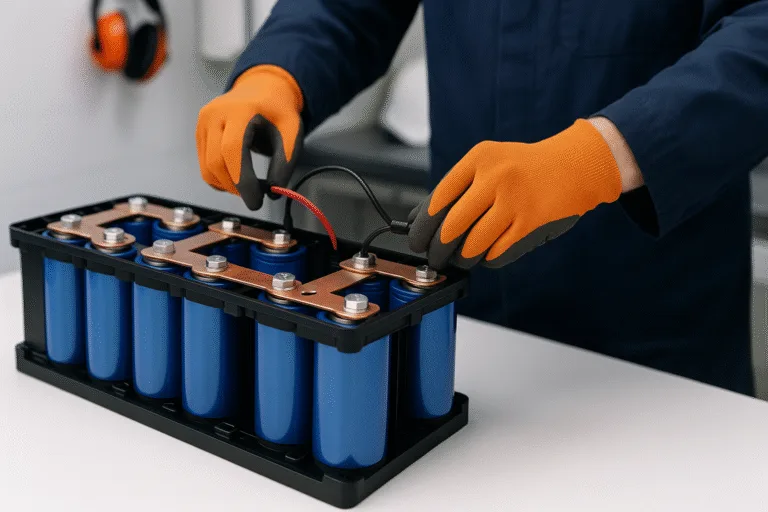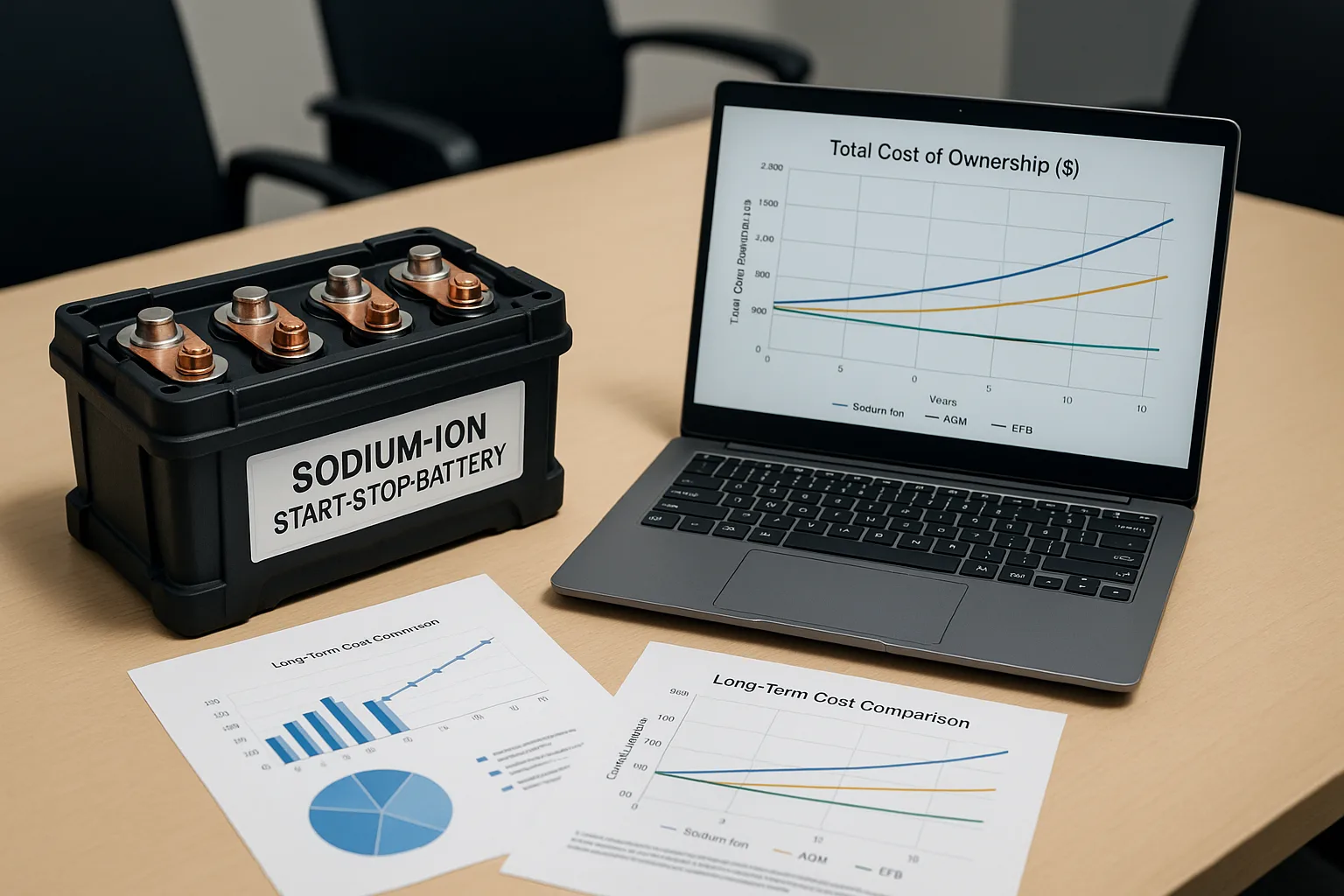
Upfront cost is a major factor in any purchase decision for our clients. Lead-acid batteries seem cheap, but that initial price hides significant long-term costs. Sodium-ion offers a new value equation that smart businesses prefer.
While the initial purchase price can differ, sodium-ion batteries are highly cost-competitive when measured by Total Cost of Ownership (TCO). Their much longer lifespan and superior durability provide far better long-term value compared to AGM or EFB batteries.
We believe in looking at the whole economic picture, not just the price tag on day one. Let’s break down the costs.
How does raw material cost impact final battery pricing?
The final price of any battery begins with the cost of its raw materials. This is where sodium-ion technology1 has a fundamental and permanent advantage over both lead-acid and lithium-ion.
Raw material costs for sodium-ion are significantly lower and more stable. Sodium is thousands of times more abundant and cheaper than lithium, and the battery design uses aluminum for the anode current collector instead of more expensive copper.

This structural cost advantage is a key reason why so many automakers and energy companies2 are investing heavily in sodium-ion. It creates a path to truly affordable, high-performance batteries3.
The Sodium Advantage
Sodium, sourced from common salt, is one of the cheapest and most abundant minerals on the planet. Its price is stable and low. Lead and lithium are traded as commodities, and their prices can be extremely volatile, making long-term cost planning difficult for our customers.
Cost-Effective Design
Beyond the sodium itself, the cell’s design is inherently cost-effective. A key innovation is the ability to use low-cost aluminum foil as the anode current collector. In lithium-ion cells, this component must be made of more expensive copper foil. This difference alone results in a significant saving at the cell level.
| Component | Sodium-Ion | Lead-Acid (AGM) |
|---|---|---|
| Primary Active Material | Sodium (Very Low Cost) | Lead (Volatile Commodity Price) |
| Anode Collector | Aluminum Foil (Low Cost) | Lead Alloy Grid (Commodity Price) |
| Cathode Collector | Aluminum Foil (Low Cost) | Lead Alloy Grid (Commodity Price) |
What is the cost per cycle compared to AGM/EFB?
A truly revealing way to measure cost is to look at the cost per cycle4. How much are you paying for each time the battery does its job of starting the engine?
The cost per cycle for a sodium-ion battery is substantially lower than for an AGM or EFB battery. Even if the initial price is higher, its ability to deliver 3 to 5 times more cycles makes it the more economical choice over its lifetime.
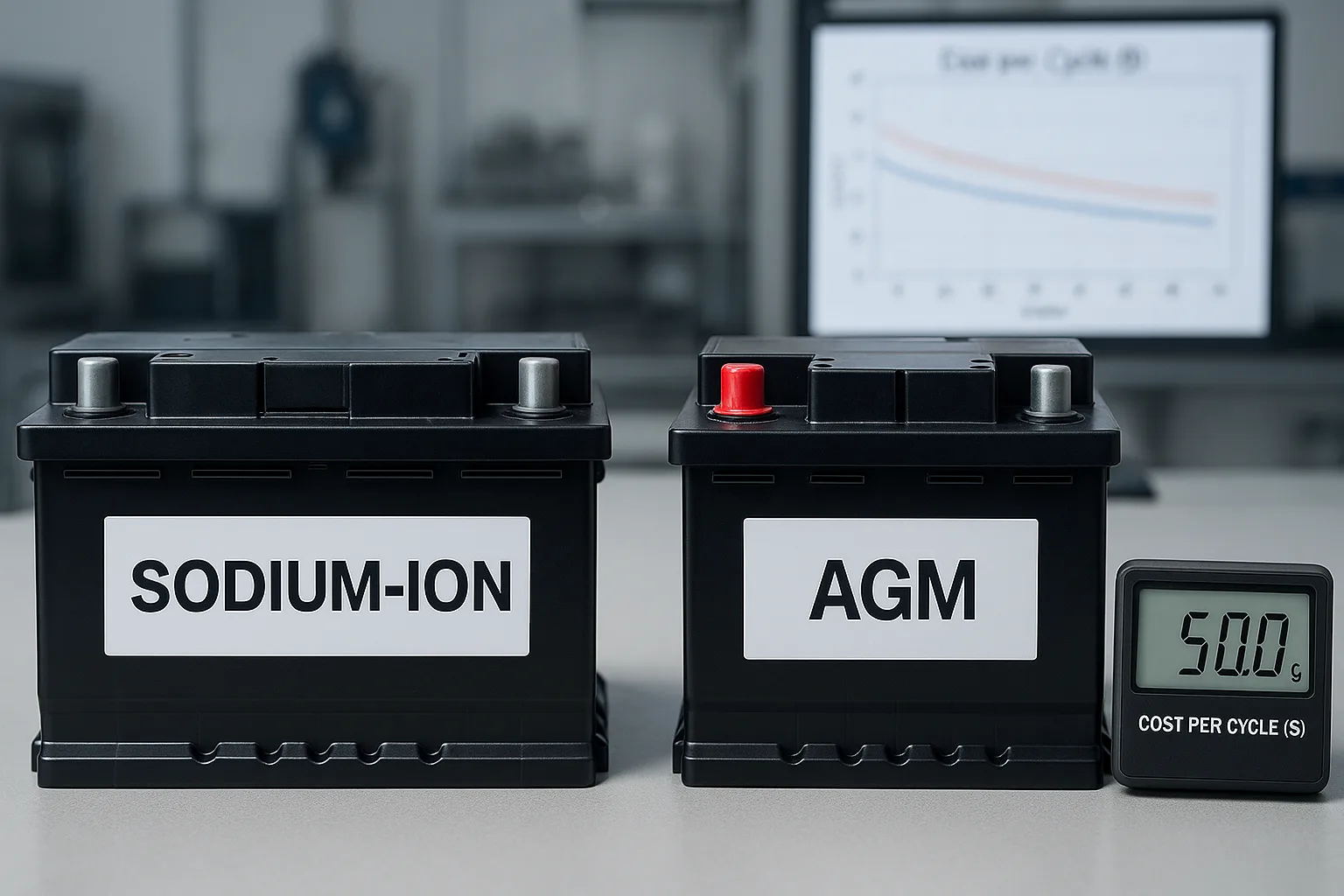
This metric is especially important for high-use applications like taxis, delivery fleets, or any vehicle that spends a lot of time in city traffic.
The Simple Calculation
We encourage our clients to do this simple math: Cost Per Cycle = Initial Battery Price / Total Rated Cycles. A lower result is better, as it means you are getting more work done for your money.
An Example Breakdown
Let’s use some realistic numbers for comparison. The exact prices can vary, but the ratio is what matters.
| Metric | AGM Battery Example | Sodium-Ion Battery Example |
|---|---|---|
| Initial Price | $180 | $300 |
| Rated Cycle Life | 500 cycles | 2,500 cycles |
| Calculated Cost Per Cycle | $0.36 | $0.12 |
As you can see, the cost for each engine start using sodium-ion is a fraction of the cost of using AGM.
Can large-scale production make sodium-ion start-stop batteries cheaper?
Sodium-ion is a newer technology compared to lead-acid’s 100-year history. Like all modern technologies, its cost will come down significantly as production volume increases. The potential for cost reduction is enormous.
Yes, absolutely. As production scales up, manufacturing costs will decrease dramatically due to economies of scale5 in material purchasing, automated assembly, and supply chain optimization. The cost curve for sodium-ion is dropping steeply.
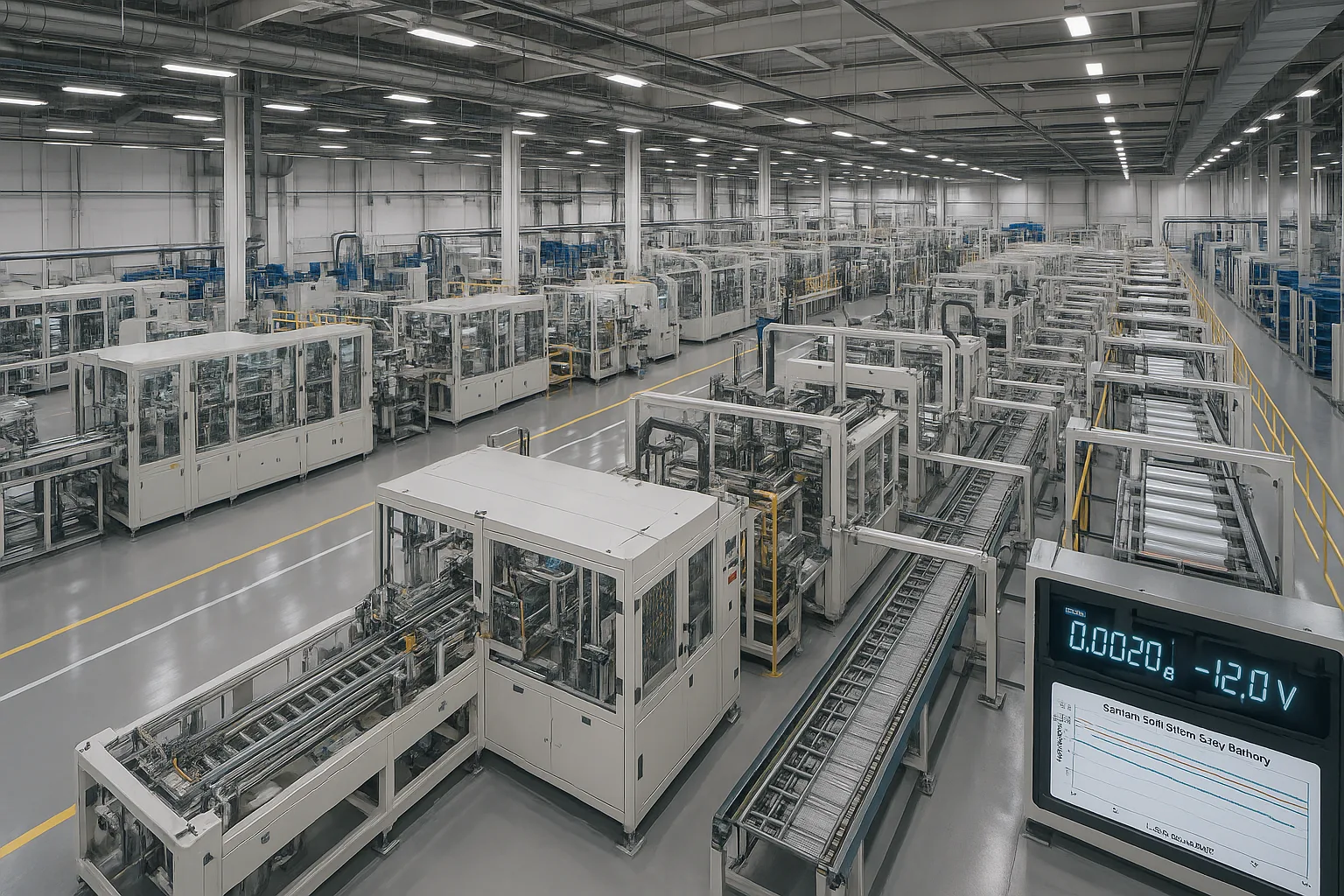
We are already seeing this happen. Every year, our processes become more efficient, and we pass those savings on to our B2B partners.
Economies of Scale
This is a basic principle of modern manufacturing. Buying raw materials by the shipload instead of the pallet gets a much better price. Running highly automated assembly lines 24/7 is far more efficient than small-batch production.
The "Giga-factory" Effect
Massive investments are being made globally in battery "giga-factories". Much of the equipment and processes used for lithium-ion production can be adapted for sodium-ion. This allows us to scale up much faster and more cheaply than if we were starting from scratch.
How does total cost of ownership differ?
The ultimate financial metric for any business asset, from a printer to a delivery truck, is its Total Cost of Ownership (TCO)6. This includes not just the purchase price but all associated costs over its useful life.
The TCO for a sodium-ion battery is significantly lower than for an AGM or EFB battery, especially in commercial or high-use vehicles. This is due to its longer life (fewer replacements), higher reliability (less vehicle downtime), and better efficiency.
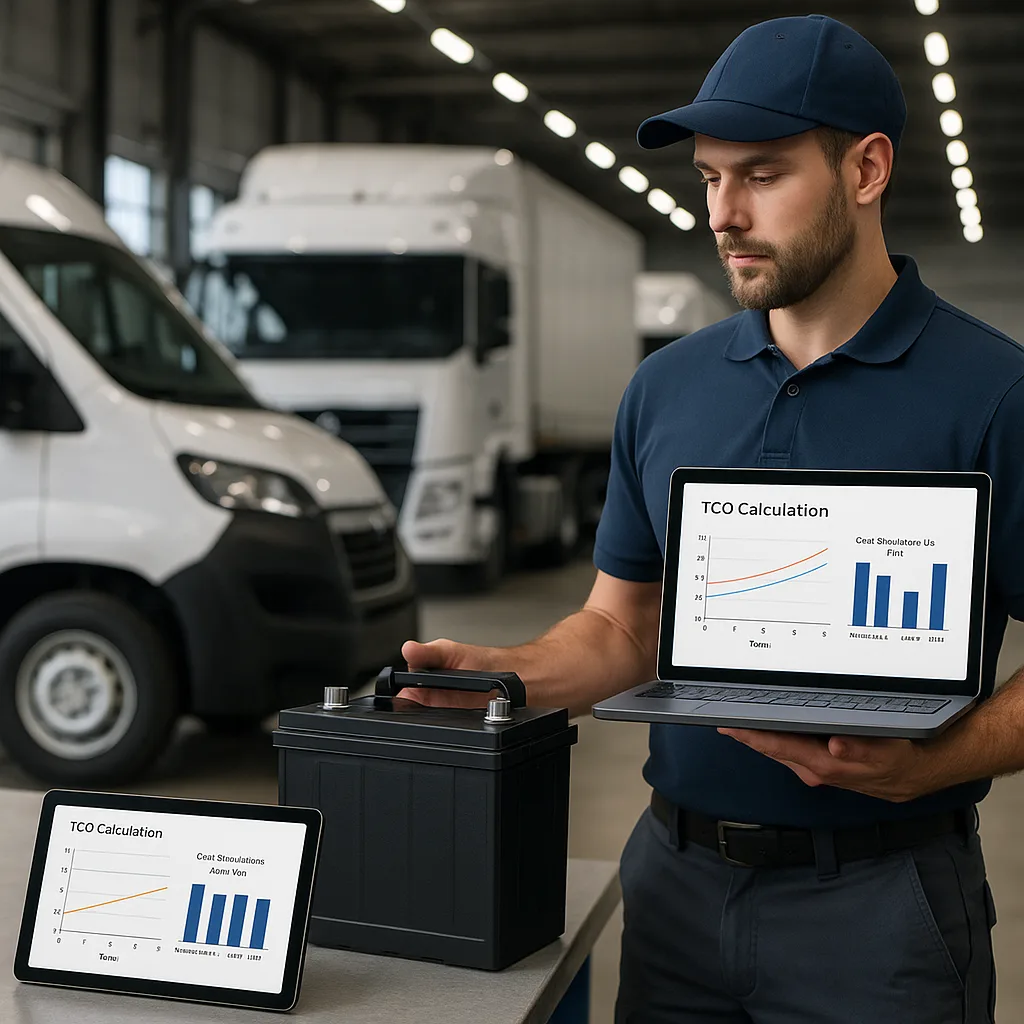
Looking at TCO helps our clients make smarter long-term investments, not just cheaper short-term purchases.
Components of TCO
To understand the full picture, you must consider:
- Initial Purchase Price: The cost to buy the battery.
- Replacement Costs: The cost of buying new batteries over the vehicle’s life.
- Labor Costs: The cost to pay a technician to install those replacement batteries.
- Cost of Downtime: The lost revenue when a vehicle is in the shop for battery service instead of being on the road working.
For a fleet operator, the cost of downtime is often the biggest expense of all. A battery that doesn’t fail keeps the business running.
Conclusion
While the upfront price is one factor, sodium-ion’s lower raw material costs7, dramatically lower cost per cycle, and superior Total Cost of Ownership make it the clear long-term economic choice for modern vehicles.
-
Explore the benefits of sodium-ion technology, which offers a cost-effective and sustainable alternative to traditional battery technologies. ↩
-
Find out how major industries are shifting towards sodium-ion technology for better battery solutions. ↩
-
Explore what makes a battery high-performance and how sodium-ion technology fits into this category. ↩
-
Learn how cost per cycle impacts battery economics and why sodium-ion batteries can be more economical over time. ↩
-
Discover how scaling production can lead to significant cost reductions in battery manufacturing. ↩
-
Understanding TCO helps businesses make smarter long-term investments in battery technology. ↩
-
Understanding raw material costs is crucial for evaluating battery pricing and making informed purchasing decisions. ↩

